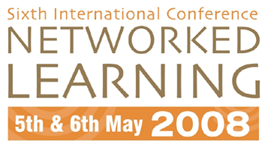

Fluid Centrality of Social-Technical Relations in a Networked Environment
Judith Guevarra Enriquez
Abstract
Network has been used as a metaphor to understand learning with technologies, as a descriptor of the new learning configurations and as a measure of cohesion, centrality and strength of ties using social network analysis (SNA) in current networked learning (or computer-supported collaborative learning) research. As a metaphor, it has raised questions about relatedness and interconnections. As a new social formation, it allows us to recognise the effects of the mobilities of goods, peoples and ideas made possible by technological advances (Castells, 1996; 2000). And as a measure, it is driven by notions of knowledge construction, community and collaboration (e.g. de Laat, 2002; Sing & Khine, 2006). There is almost this desire to regain a sense of belonging that is curiously inscribed into the technologies we use and the patterns of relations based on ties stored in system or log files.
In this article, network as a measure becomes an effect in itself. In particular, centrality is enacted as a relational effect of many things, not just those tied by message threads in forums created and stored in virtual learning environments (e.g. Blackboard). Message threads that are treated as relational ties in an electronic medium are established by both social and material connections.
Furthermore, it argues that the new forms of social patterning and interactions that new communication technologies allow may not be confined within an electronic medium (ie. Blackboard). After all, technologies are not exogenous factors affecting learning. The communication flow in electronic discourse is continuous and non-transactional and the communication links established are fluid.
Why do researchers engage in SNA? SNA in educational research has particularly focused in identifying patterns in messages - that an exchange is a collaborative tie (e.g. Lipponen, et al., 2003) and in terms of knowledge construction - a message is a knowledge object (e.g. Aviv, et al., 2003) and that the online environment gathers a community of practice, where central actors who facilitate collaboration or influence knowledge construction may be identified.
This article enacts ties by representing communication networks based on different media and by emphasising on the ties that also bind through the socio-technical arrangements and engagements beyond the response relations the thread structure of a virtual learning environment (VLE) is able to capture and store. It considers the perceived social ties of participants in six communication media alongside response ties in two forums created in Blackboard by performing Freeman’s degree centrality using UCINET (a software for SNA, Borgatti, Everett & Freeman, 2002).
Network diagrams depicting the communication networks of 21 students training to be teachers of History in an English university and Freeman’s centrality measures elucidate a network reality wherein individuals are ‘lifted out’ from their contexts and re-inserted in largely disembedded social relations, and yet they remain related somehow in their mobile and multiple encounters (Wittel, 2001). There are ties outside the virtual environment that have relational effects on the threads that are tied online, and that there are ties that are produced in the board that would have not been established otherwise.
The centrality in the actual online forums and in the perceived forum relations has been different. The communication networks have been different, too. There are recursive and implicit ties that persist in the shifting context of interaction beyond Blackboard. Network links are established in the course through social relations maintained and sustained across different communication networks and through a common goal (in this case, to be teachers). This common goal is binding in ways that is not present in the network structures or forum threads. It is rather the case that the centrality of actors has been fluid within and alongside other kinds of relations.
| About NLC |
2008 Conference Papers
| Conference Committee| Keynote
Speakers
| Papers from previous NL conferences |Research Seminars| Current Conference
| Sponsors | Contact
|
